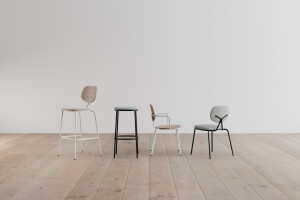This is a school about parallel and light.
The school spreads freely in the horizontal direction on the vast site, becoming a “mat-building”.
The two-storey teaching block consists of the “platform” (functional classrooms) on the first floor and the “huts” (standard classrooms) on the second floor.
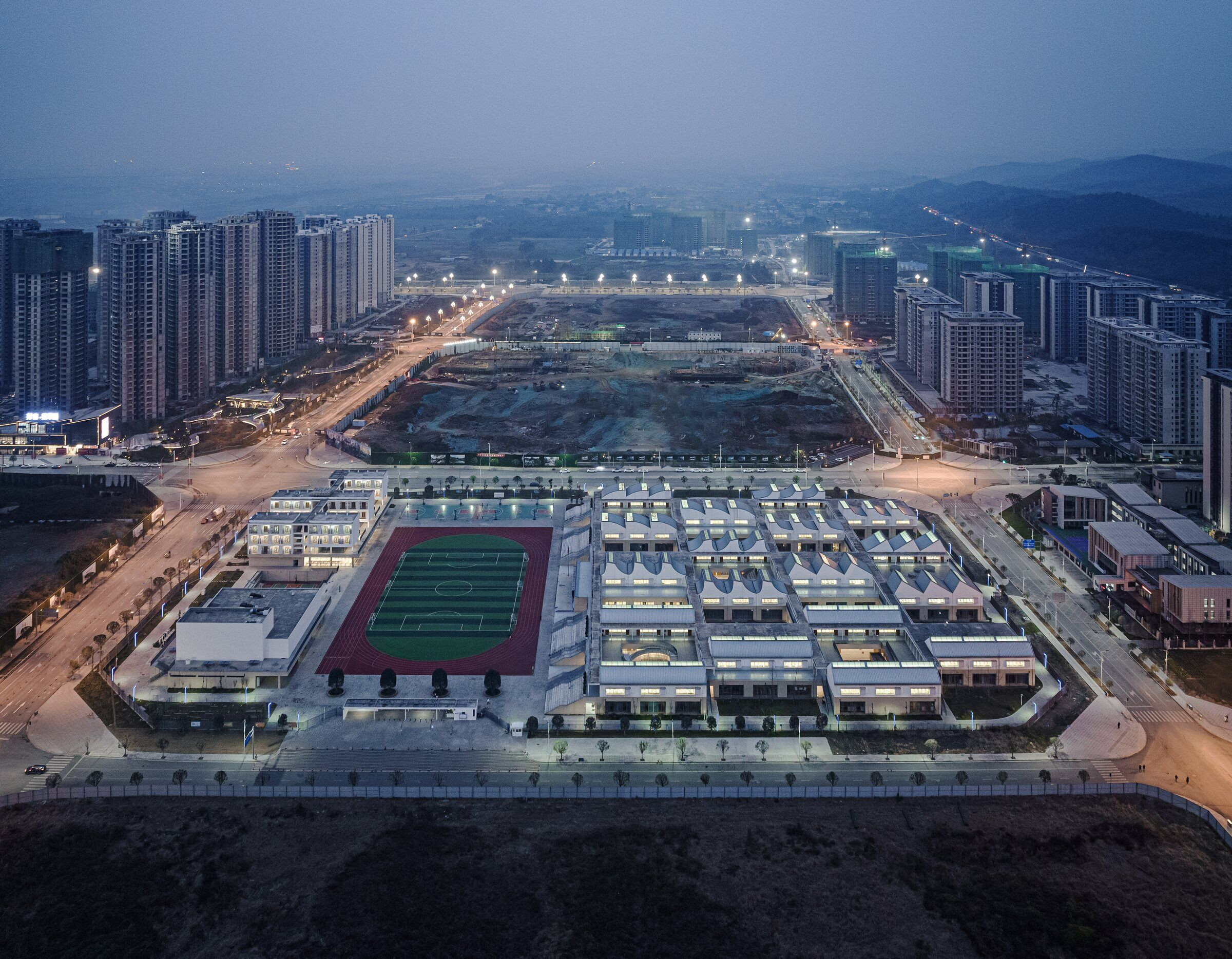
The elevated platform provides more outdoor spaces, allowing the students to carry out outdoor activities during recess time more conveniently. The huts with various forms of roofs outline a fairy-tale view of the settlements. Internally, a soft and interesting classroom space is created through skylight. The design of the roof and light strategy is based on students’ age characteristics and learning styles of different grades. As such, students will have diverse spatial experiences of classrooms throughout the six years of study.

In the plan layout, 54 classes are divided into six grade groups, each one with a courtyard as its center for socializing and activities. Classrooms and courtyards are connected by communal corridors to form a uniform grid layout in the teaching block. There is no hierarchy or a clear center in the layout, where students are able to move and play freely.
Huts, platforms, courtyards, trees and people, together they create a diverse and interesting urban landscape.
It is our wish that this school could be just like a city, breeding imagination, freedom and miracles.
——HUA Li

Qingyijiang Road Elementary School is situated on a 90-mu site with buildings occupying about 30,000 square meters. Compared with schools in high-density cities such as Shenzhen, the project has a relatively loose site constraint with a plot ratio around 0.5.
Under such conditions, we create a new school paradigm that is different from traditional systems.

Low-rise, High-density
To meet the planning regulations, traditional classroom buildings have more than four floors. Therefore, the long distance to the ground floor playground is inconvenient for the students to go to. With a low floor area ratio, we reduce the height of the building and the distance between classrooms and open areas. It enables the students to carry out outdoor activities easily or to be evacuated quickly in case of emergencies such as earthquakes or fire. The design adopts a “low-rise and high-density” approach, and the two-storey teaching block spreads horizontally to form a “mat-building”.
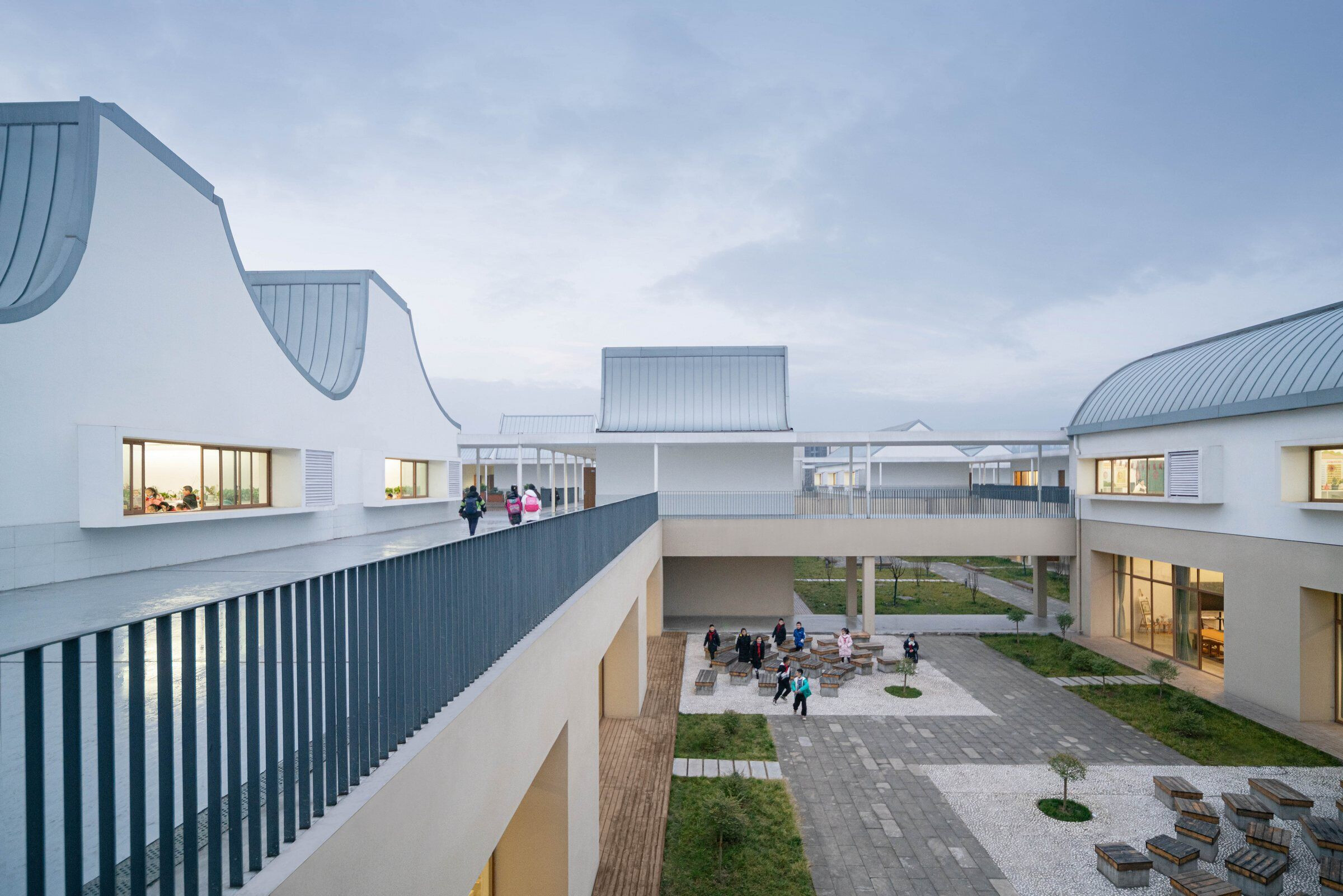
Decentralization
Located in a new urban area, the site is square in shape and surrounded by residential areas. As a typical tabula rasa, it is well-organized but poorly characterized. Considering the factors of circulation, noise, and light, we divide the teaching block and the living block (including an auditorium, a dining hall, a student dormitory, etc.) on the east and west sides of the playground, whch are independent to each other.
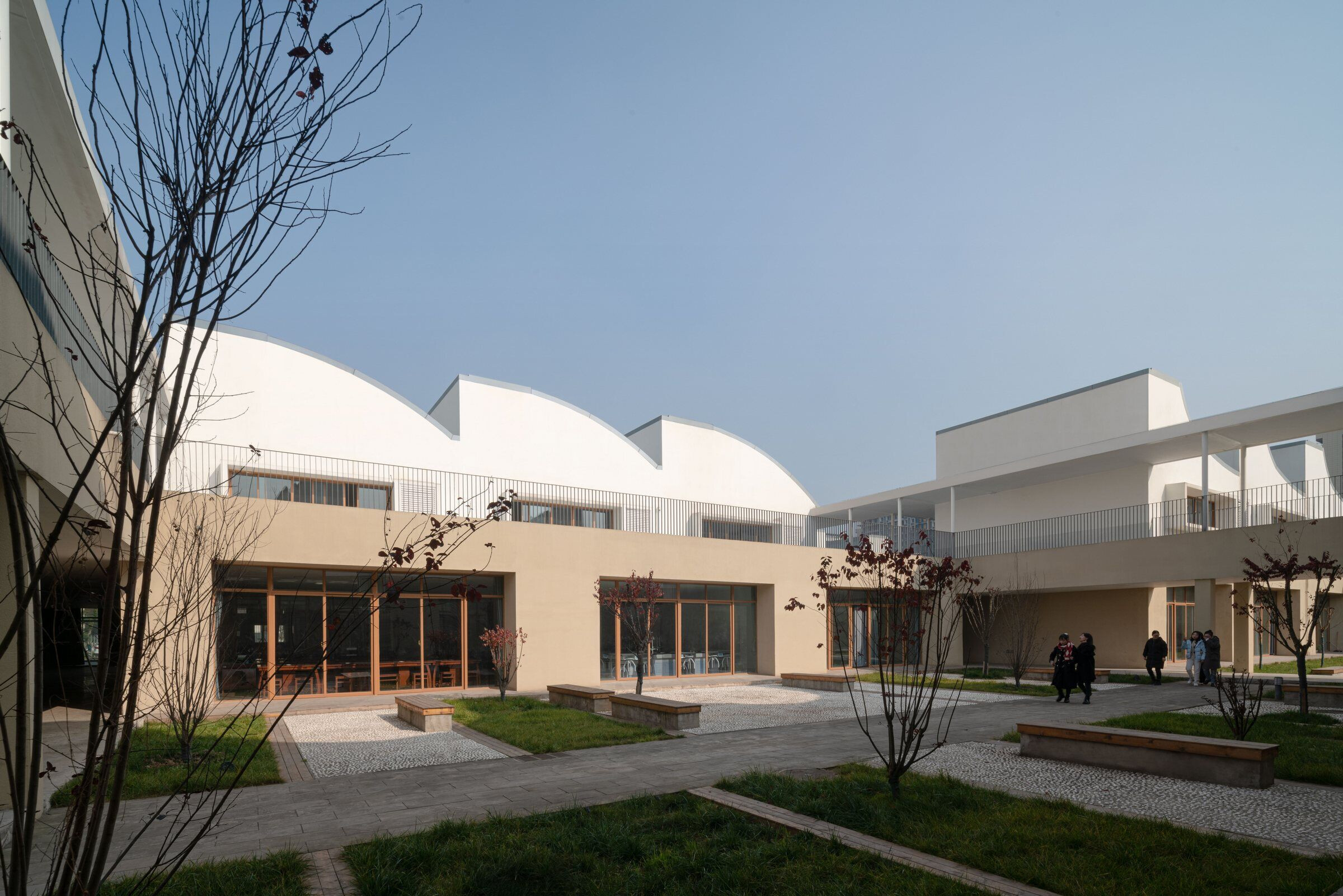
For the layout of the teaching block, we try to create a unique system that is different from traditional schools. Centralized paradigms in traditional schools are designed for public events, which, in fact, are often held at the playground or auditorium. Therefore, it is not necessary to create a central point within the teaching area but decentralized nodes.
Based on this concept and site conditions, we create a decentralized network within the plan. Units of program including classrooms, courtyards, and platforms are laid out on an orthogonal grid to form an interweaving system.

It is a paradigm of continuity, sprawl, homogeneity, openness, equality, and penetration. Classrooms, platforms, and courtyards are connected by corridors, eliminating the sense of isolation, and forming a spatial system of interaction.
Each grade block groups with three standard classrooms, and three grade blocks enclose a public platform. There are courtyards between grade groups, so each classroom is neighbored by natural and interactive spaces.

The Elevated Ground
In the two-storey teaching building, an elevated platform divides 54 classrooms on the upper level and functional classrooms on the lower level. Elevated courtyards are laid out in each grade group, which are convenient for students to enjoy running and looking up the sky during the break time. The elevated courtyards become nodes of interaction in different grade groups.
Those elevated courtyards are connected to the first floor by ramps and stairs of various forms. The large continuous steps connect the second floor and the playground, serving as grandstand seats facing the sports field on the west side.
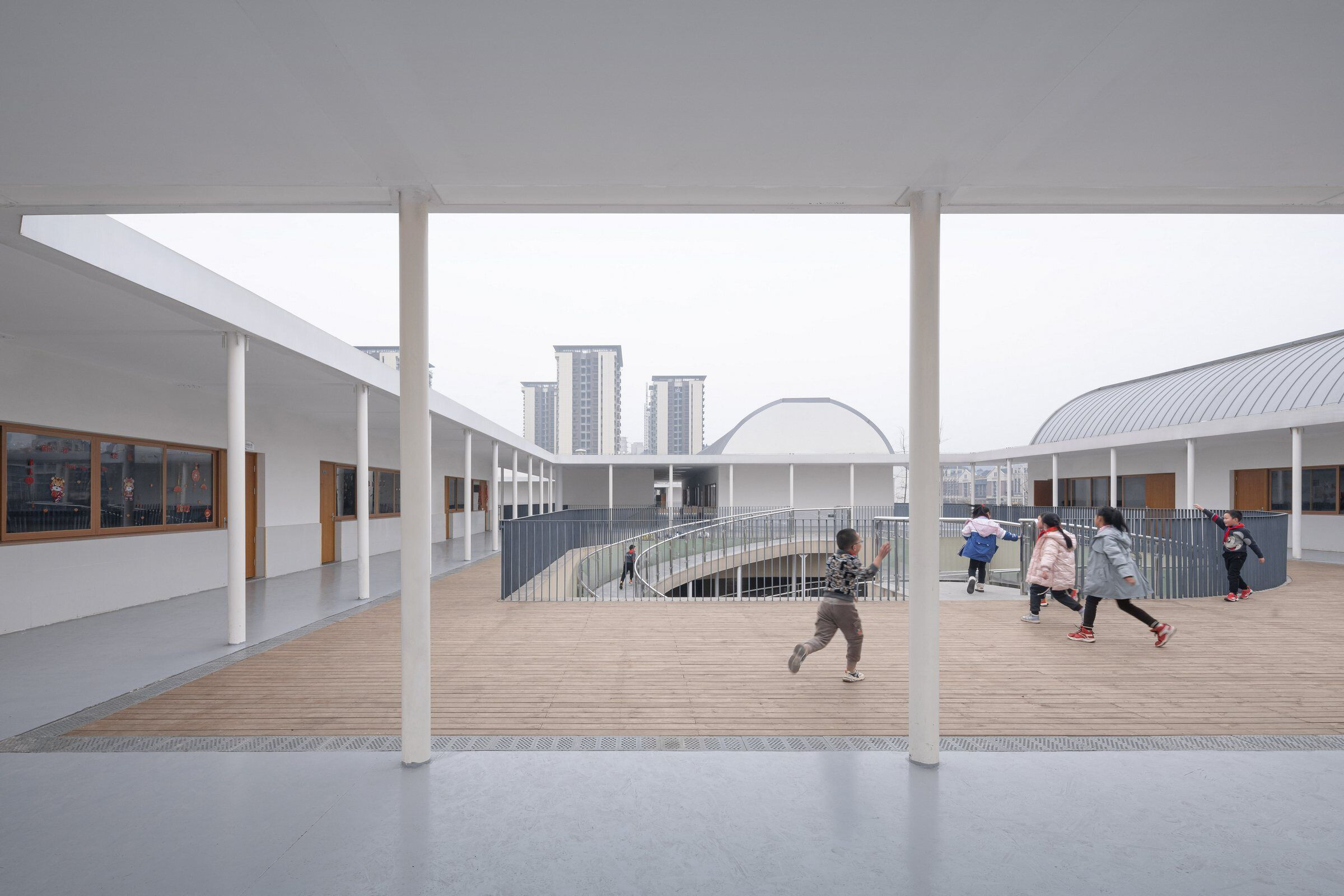
Roof and Light
Children spent the most time on campus in standard classrooms, so the spatial quality is paramount. Most traditional classrooms are vertically distributed and can only get limited natural lights from side windows. The design arranges all classrooms on the second floor, which is the top floor, with access to natural light from the rooftop. Based on students’ age characteristics and learning styles in different grades, we design 6 types of roof for each of them. Classrooms with different roofs get natural light in different ways, creating rich spatial experiences which are relaxing or serious, lively or intense. Each student will have diverse learning environments throughout the six years of study. We hope these bright and tall classrooms like art galleries can bring students fun, creativity, and imagination. With various roofs which are rhythmically organized, the overall appearance of the school is like a cluster of huts in fairy tales.

Climate and Construction
The grid layout of the school ensures most of the classrooms with a small depth, enhancing natural ventilation in the hot and humid climate in Sichuan province. The high-slope roofs with skylights form a natural drainage system and it is also conducive to cooling and energy-saving.
Additionally, the corridors between the classroom and the courtyard serve as a buffer space to provide shading and protection against wind and rain, and the semi-outdoor spaces on the first floor also offer additional activity spaces for students even in adverse weather.

We choose the steel structure to adapt to the unitized feature of the building and the prefabricated assembly which helps the rapid completion (the project was originally planned to be completed in one year, but unfortunately it was not realized due to funds, management and the construction unit). The roof adopts a titanium-zinc standing seam roofing system, and the material of the ceiling is perforated gypsum boards for sound absorption. We originally applied stone to the wall on the first floor and paint on the second floor to emphasize the contrast of heaviness and lightness. The stone was later changed to stone-like coating due to cost constraints.

Summary
This design explores the decentralized school system, which can be summarized as parallel. Parallel means equality, non-hierarchy, freedom, and diversity. In addition, roof and light provide a unique spatial experience. Therefore, we call it a school of parallel and light.
Team:
Client: Jingyang District Education Bureau, Deyang
Principal architect: HUA Li | TAO (Trace Architecture Office)
Design team: HUA Li, YAN Yadong, LI Wenjie, CHEN Yuan, WANG Langhuan, DU Yunqiao, CHENG Xiangju, ZHAO Kai, MA Kun, FENG Zhenhui, TANG Yuanhong, SONG Jing, CHEN Xiaoyi, ZHAO Wenjia, GUO Siyang, LEI Zheng, ZHANG Ming
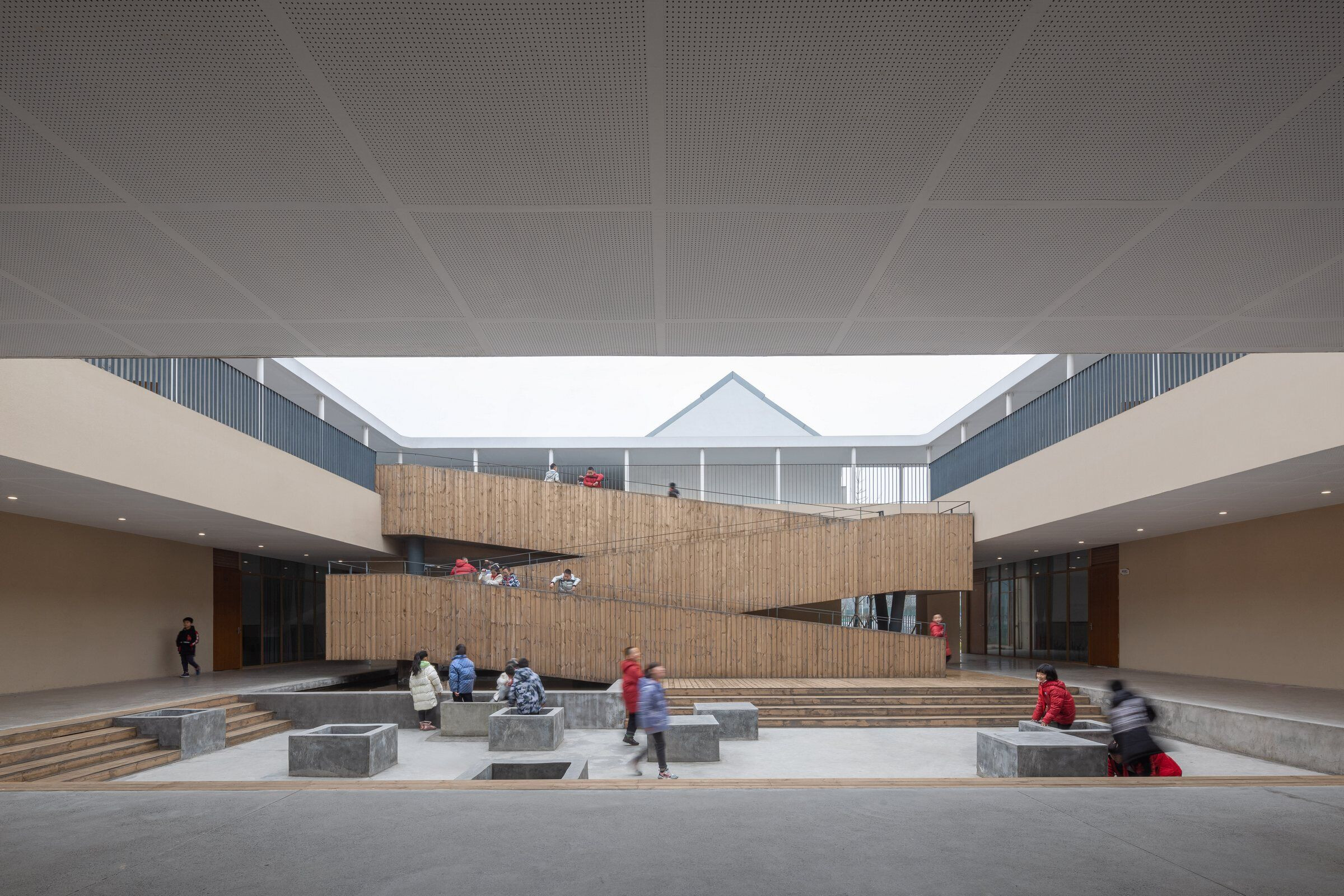





Material Used:
Structural system: Steel structure (classroom building), reinforced concrete structure (student dormitory, dining hall & auditorium)














































